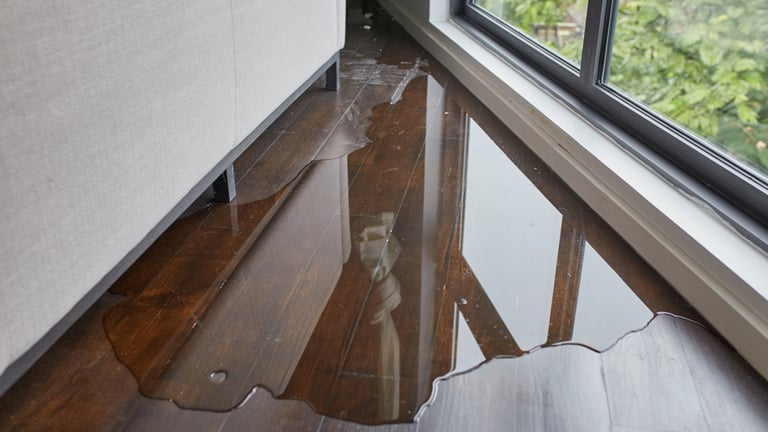Do's & Don'ts of Water Damage.
Do's & Don'ts of Water Damage.
Blog Article
This post which follows involving What You Can Do At Home To Prevent Fire And Water Damage is immensely attention-grabbing. You should take a peek.

Water gives life, water invasion on components where it's not supposed to be can result in damage. It can peel off away surfaces and also erode the foundation if the water soaks right into your structure. Mold and mildew and mildew additionally thrive in a moist setting, which can be dangerous for your health and wellness. Residences with water damages smell old as well as mildewy.
Water can originate from several resources such as typhoons, floodings, ruptured pipelines, leakages, as well as sewer concerns. In case you experience water damage, it would be great to know some safety and security preventative measures. Here are a couple of guidelines on just how to handle water damages.
Do Prioritize Home Insurance Policy Protection
Water damage from flooding dues to heavy winds is seasonal. You can likewise experience an abrupt flood when a defective pipeline instantly ruptures into your house. It would certainly be best to have residence insurance that covers both acts of God such as natural disasters, as well as emergency situations like damaged plumbing.
Do Not Neglect to Switch Off Energies
In case of a calamity, specifically if you stay in a flood-prone location, it would certainly be a good idea to shut off the primary electrical circuit. This cuts off power to your entire residence, protecting against electric shocks when water is available in as it is a conductor. Furthermore, don't forget to switch off the primary water line valve. Furniture will relocate around and also create damages when floodwaters are high. Having the main shutoff shut off protects against additional damages.
Do Stay Proactive and also Heed Weather Informs
Listen to evacuation cautions if you live near a creek, lake, or river . Doing so decreases potential building damage.
Do Not Overlook the Roof
You can prevent rain damages if there are no openings as well as leaks in your roof. This will certainly stop water from flowing down your walls and also saturating your ceiling.
Do Take Note Of Small Leakages
A burst pipe doesn't happen over night. Generally, there are red flags that indicate you have damaged pipelines in your house. You might notice bubbling paint, peeling off wallpaper, water touches, water spots, or dripping sounds behind the walls. Ultimately, this pipeline will certainly break. Preferably, you should not wait for things to escalate. Have your plumbing repaired before it results in enormous damages.
Do Not Panic in Case of a Ruptured Pipe
When it comes to water damages, timing is vital. Thus, if a pipe bursts in your house, promptly closed off your major water shutoff to reduce off the resource. Call a reputable water damage restoration specialist for assistance.
Water gives life, water intrusion on parts where it's not expected to be can result in damage. Homes with water damage scent old and also stuffy.
Water damage from flood charges to hefty winds is seasonal. You might notice gurgling paint, peeling off wallpaper, water touches, water spots, or dripping sounds behind the wall surfaces. When it comes to water damage, timing is key.
Some Do's & Don't When Dealing with a Water Damage
DO:
Make sure the water source has been eliminated. Contact a plumber if needed. Turn off circuit breakers supplying electricity to wet areas and unplug any electronics that are on wet carpet or surfaces Remove small furniture items Remove as much excess water as possible by mopping or blotting; Use WHITE towels to blot wet carpeting Wipe water from wooden furniture after removing anything on it Remove and prop up wet upholstery cushions for even drying (check for any bleeding) Pin up curtains or furniture skirts if needed Place aluminum foil, saucers or wood blocks between furniture legs and wet carpet Turn on air conditioning for maximum drying in winter and open windows in the summer Open any drawers and cabinets affected for complete drying but do not force them open Remove any valuable art objects or paintings to a safe, dry place Open any suitcases or luggage that may have been affected to dry, preferably in sunlight Hang any fur or leather goods to dry at room temperature Punch small holes in sagging ceilings to relieve trapped water (don't forget to place pans beneath!); however, if the ceiling is sagging extremely low, stay out of the room and we'll take care of it DO NOT:
Leave wet fabrics in place; dry them as soon as possible Leave books, magazines or any other colored items on wet carpets or floor Use your household vacuum to remove water Use TV's or other electronics/appliances while standing on wet carpets or floors; especially not on wet concrete floors Turn on ceiling fixtures if the ceiling is wet Turn your heat up, unless instructed otherwise

We had been made aware of that report on Reducing Your Risk Of Water And Fire Damage At Home through a good friend on a different web address. Please set aside a second to share this post if you appreciated it. We value reading our article about Reducing Your Risk Of Water And Fire Damage At Home.
Report this page